We like to share product recommendations with you and hope you like them! Just to make you aware Water Filter Data may collect a small share of sales or other compensation from the links on this page.
The cheapest way to remove iron from well water is roughly $50 and uses chemicals like manganese dioxide or potassium permanganate. There are also physical filtration techniques like sand or gravel filters and filters made of a mineral called birm.
Water is one of the many substances on earth that contain the chemical element iron. Even though this mineral is essential for the body’s growth and development, drinking it daily in your water is more detrimental than helpful.
Mineral water, tap water, and particularly well water may have higher quantities of iron. Knowing that the primary source of water for the entire home is well water is a problematic situation. But how would one know that the iron content of his well water?
This article will undoubtedly assist you in discovering the least expensive method to remove iron from well water if you have finally made the decision to handle the iron pollution from your personal well.
Although there are various ways to address the iron contamination from your wells, using the appropriate strategy will make the process much simpler and quicker.
How Iron contamination happens in water
 Irons that are present in rocks naturally dissolve in the water as precipitation passes through them and into aquifers. Iron does not oxidize below since there is no oxygen there.
Irons that are present in rocks naturally dissolve in the water as precipitation passes through them and into aquifers. Iron does not oxidize below since there is no oxygen there.
Iron oxidizes when it comes into contact with oxygen, which causes a chemical reaction to produce solid particles that float to the top of the water container.
By spraying water into an underground tank and then pumping it into a tank, you can improve this process of oxidation and filtration. An air injector should be used to increase the water’s oxygen content before it enters the tank.
Signs of Iron Contamination and How It Affects Your Home
Although there is no proof that drinking iron-contaminated water is unhealthy, it can cause all sorts of chaos in your home. The following are some typical consequences of iron in your water supply:
Metallic taste and odor
Water containing iron may taste and smell metallically unpleasant, making it challenging to drink. The iron has an awful taste and a dark, ink-like appearance when combined with tea, coffee, and other beverages.
Additionally, if you cook veggies in iron-rich water, they might turn out darker and less appetizing.
Iron Bacteria
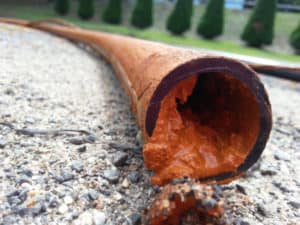
When a well is built or maintained, “iron bacteria” that naturally exist in shallow soils and groundwater might enter the water supply.
This and other forms of bacteria flourish because of the iron in your well water. Therefore, your water may include “iron bacteria” if you observe any dark, reddish, brown, or yellow slime in your sinks, bathtub, or toilet tank.
Additionally, this slime can clog plumbing fixtures and pipes and foul up your drains. Although sulfur may be the main source of the odor.
Stains on laundry and dishes
 Your garments, sheets, and towels may develop orange stains when you wash them in water that has been contaminated with iron.
Your garments, sheets, and towels may develop orange stains when you wash them in water that has been contaminated with iron.
Dishes that pass through your dishwasher are no different.
Stains on plumbing fixtures and surfaces
Iron can leave comparable stains on appliances, dinnerware, surfaces, etc. even in tiny concentrations.
These stains are not only disgusting and unpleasant, but they can also be challenging to get rid of.
Types of iron
On the crust of the earth, iron is the mineral that is most prevalent. Iron is also practically universal because of this. The majority of Americans who use wells for their water source have iron in their water. In underground water, iron can be present in three different forms.
Ferrous iron
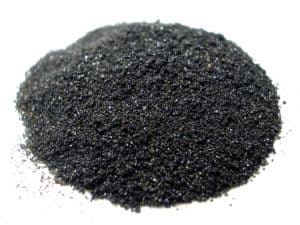 Iron in solution is known as ferric. The water in a glass that contains ferrous iron is crystal clear because the iron has entirely dissolved.
Iron in solution is known as ferric. The water in a glass that contains ferrous iron is crystal clear because the iron has entirely dissolved.
Due to its tendency to discolor toilet bowls and sinks, this type of iron can result in a variety of issues. Only when it has been exposed to air from the atmosphere will the iron stain be visible.
(Fe2+) is its chemical symbol. Use a water softener to remove this type of iron from your system. You should be aware that a very high concentration of this iron will impair the lifespan of the water softener.
Ferric iron
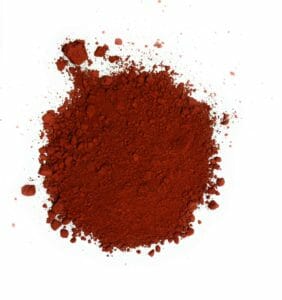 Ferric iron is oxidized iron, as opposed to ferrous iron, which is pure iron. Iron is solid and out of solution in this condition. It is filterable as a particle in this state. The molecular symbol for this is (Fe3+). Iron that has already been in contact with oxygen is called ferric.
Ferric iron is oxidized iron, as opposed to ferrous iron, which is pure iron. Iron is solid and out of solution in this condition. It is filterable as a particle in this state. The molecular symbol for this is (Fe3+). Iron that has already been in contact with oxygen is called ferric.
Since ferric is insoluble in water, it comes out of the groundwater as blown coloration. Ferric iron tends to clog your pipes if it isn’t removed. Iron that has already been in contact with oxygen is called ferric.
Since ferric is insoluble in water, it comes out of the groundwater as blown coloration. Ferric iron tends to clog your pipes if it isn’t removed.
Iron Bacteria
 Iron-eating bacteria are microscopic creatures. In soil and water, these bacteria can be found naturally.
Iron-eating bacteria are microscopic creatures. In soil and water, these bacteria can be found naturally.
These microscopic organisms feed on iron, which causes an oxidation reaction that results in rust and greasy material that gets deposited on water equipment and causes corrosion and staining.
Iron bacteria is quite unpleasant since it is very challenging to filter out. Iron serves as the energy source for iron bacteria. Due to the prevalence of iron bacteria in North America, iron bacteria contamination in US well water is a highly regular occurrence. It is identified chemically as (Fe3+).
By practicing proper hygiene while building the well, utilizing clean drilling equipment, and applying residual chlorine in the drilling water, you can reduce iron bacteria concerns. Surface water should never be used for drilling purposes.
Cheap Ways to Remove Iron from Well Water
Water Sedimentation
Water can be made better in terms of its constituent parts by simply allowing it to lie undisturbed until heavier particles, such as iron, settle on the bottom. Sedimentation is the term for this process.
Despite having been used since ancient times, the sedimentation method is still effective today. Fill a bucket or larger storage tank as necessary, then leave it to sit for a few hours to sediment water at home.
However, for the smaller impurities, such as clay particles and smaller bacteria, let the water soak overnight. After that time, larger particles and microbes will deposit. Carefully remove your cleaned water without disturbing the sedimented particles when the water has settled.
Although sedimentation is the cheapest approach, consider employing sedimentation filters for more effective outcomes. These kinds of filters physically keep out of your water any undesirable particles, leaving it clean for daily usage.
Activated Charcoal
Utilizing activated charcoal is an additional simple and affordable method of removing iron from water. Because of its capabilities, activated charcoal removes pollutants from water while retaining healthy minerals and salts.Simply smash your charcoal and pack it tightly into a container made of solid material to make an activated charcoal filter. Allow the water to drop through the filter after that to enjoy a stream of pure water.
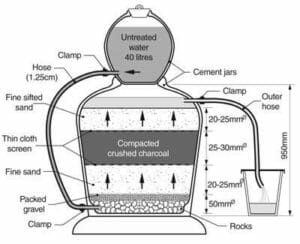
Only little amounts of water can be filtered with this kind of cheap handmade filter. Use activated charcoal filters, which are installed into water purification systems to provide your household with iron-free water, for bigger quantities.
Chlorination
Disinfecting your well water is a low-cost technique to get rid of any form of iron present in it. The least expensive and most efficient way to achieve this is to combine white vinegar with any type of household bleach. Check your water for any traces of iron, germs, and microorganisms before beginning the process of disinfecting your well.
Next, turn off your pump and quickly and continuously add bleach and vinegar. After that, turn on your pump and thoroughly rinse the interior of your well. If there are any interior faucets, open them all and let the water run until there is no longer any chlorine odor.
Allow the chlorine residue to sit in your well and the pipes for at least 8 hours before flushing entirely to provide complete protection. At this time, the water coming from your indoor faucets may seem rusty; this is iron ions leaving your plumbing system.
Make sure to replace all other water treatment filters as directed by the manufacturer before the disinfection is finished. Although this method of treating your well for iron needs more work, it is one of the most efficient and reasonably priced ways to remove iron from your well water.
More Advanced Methods to Remove Iron
Water softeners
 One of the most common methods of cleaning water is with water softeners. This entails treating your well appropriately, taking into account both its hardness and the presence of iron.
One of the most common methods of cleaning water is with water softeners. This entails treating your well appropriately, taking into account both its hardness and the presence of iron.
Industrial water softeners can eliminate ferrous iron from your well water since they remove calcium and magnesium from the water.
Even after using water softeners to treat the iron, it is still common for iron to be found in some circumstances. For 100% quality, seek professional advice or think about incorporating another kind of filter.
Aeration
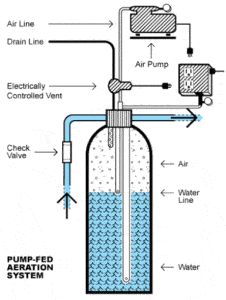 When water and air are in close proximity, aeration is used to dissolve gases. By doing this, turbulence is produced, which prompts oxidation and the scrubbing process. After that, iron-particle filtration is simple.
When water and air are in close proximity, aeration is used to dissolve gases. By doing this, turbulence is produced, which prompts oxidation and the scrubbing process. After that, iron-particle filtration is simple.
This process cleans your water of dangerous substances including ammonia, chlorine, methane, and others in addition to iron.
However, keep in mind that water that has too much oxygen in it could corrode.
Reverse Osmosis
A specific kind of membrane is used in the reverse osmosis method of water purification to almost completely remove all impurities.
Purifying water as much as possible All forms of iron are completely absent with RO water.
Conclusion
Use various methods to detect the presence of this metal in your well water depending on the type of iron.
When bacterial iron and ferric iron are apparent due to their color, it takes more effort to identify ferrous water. In any event, since it may have a detrimental impact on the health of your entire family, including testing the iron levels in your well water on your list of routine maintenance.
Enjoy your iron-free well water with a variety of filtering techniques, from sedimentation, which is straightforward and inexpensive, to full water cleaning systems!

Wayne is a water quality expert – The founder of Water Filter Data. He has a degree in microbiology and his field of expertise is drinking water. His goal is to allow for clean and healthy water for as many people as possible.



